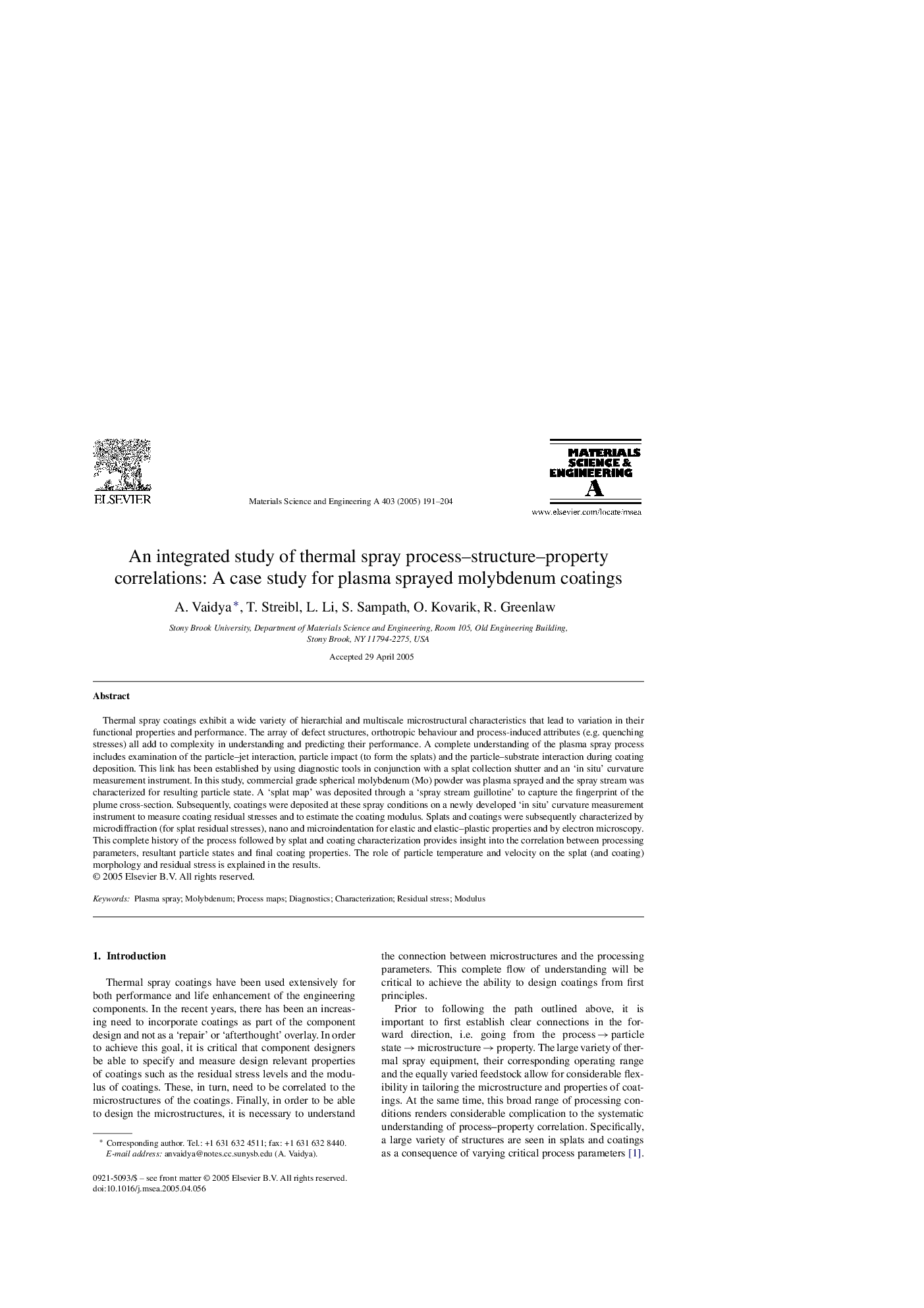| Article ID | Journal | Published Year | Pages | File Type |
|---|---|---|---|---|
| 9795997 | Materials Science and Engineering: A | 2005 | 14 Pages |
Abstract
Thermal spray coatings exhibit a wide variety of hierarchial and multiscale microstructural characteristics that lead to variation in their functional properties and performance. The array of defect structures, orthotropic behaviour and process-induced attributes (e.g. quenching stresses) all add to complexity in understanding and predicting their performance. A complete understanding of the plasma spray process includes examination of the particle-jet interaction, particle impact (to form the splats) and the particle-substrate interaction during coating deposition. This link has been established by using diagnostic tools in conjunction with a splat collection shutter and an 'in situ' curvature measurement instrument. In this study, commercial grade spherical molybdenum (Mo) powder was plasma sprayed and the spray stream was characterized for resulting particle state. A 'splat map' was deposited through a 'spray stream guillotine' to capture the fingerprint of the plume cross-section. Subsequently, coatings were deposited at these spray conditions on a newly developed 'in situ' curvature measurement instrument to measure coating residual stresses and to estimate the coating modulus. Splats and coatings were subsequently characterized by microdiffraction (for splat residual stresses), nano and microindentation for elastic and elastic-plastic properties and by electron microscopy. This complete history of the process followed by splat and coating characterization provides insight into the correlation between processing parameters, resultant particle states and final coating properties. The role of particle temperature and velocity on the splat (and coating) morphology and residual stress is explained in the results.
Related Topics
Physical Sciences and Engineering
Materials Science
Materials Science (General)
Authors
A. Vaidya, T. Streibl, L. Li, S. Sampath, O. Kovarik, R. Greenlaw,
